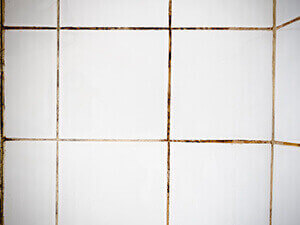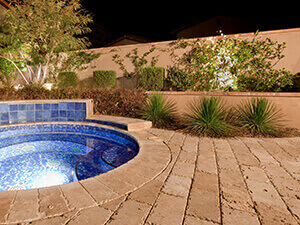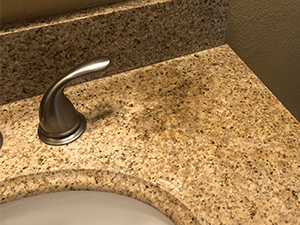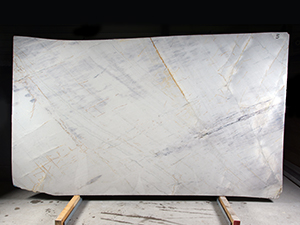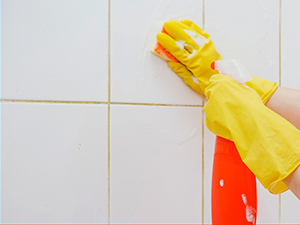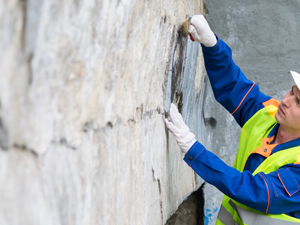Home and business owners and property managers have a common complaint about the grout in their showers and floors turning yellow. Testing can help determine what is causing the problem. Solutions will vary, depending on the cause. Here are the details.
1. Toiletries
Shampoos, soaps, and other personal items used in showers contain chemicals that can cause discoloration, and hence, yellowing of grout. This is especially true of hair dyes and shampoos that contain coloring agents. Check the product labels to see whether products contain dyes, polymers, or other ingredients that may cause grout to turn yellow.
2. Body Oils
Skin and hair oils contain many contaminants that can cause discoloration of not only grout but also tile. These body oils are what cause the familiar yellow stain, ring-around-the-collar.
3. Sealers and Waxes
Sealers and various waxes can contain polymers that can discolor over time and cause yellowing.
4. Grout Type
Numerous grout types are prone to yellowing. For example, white epoxy grouts are notorious for turning yellow.
5. Cleaning Products
Certain cleaners, especially those that contain dyes, can cause discoloration of grout. Household bleach commonly discolors grout. Check the product labels to see whether products contain dyes, polymers, or other ingredients that may cause grout to turn yellow.
6. Iron
Certain water supplies contain iron. Water containing iron can deposit minerals on the grout that can oxidize and cause a yellow discoloration. If the water used to mix the grout during installation contained iron, this can also cause discoloration. Your professional stone and tile restoration technician can do a test to determine if your water supply and/or your grout contain iron. If your water supply contains iron, install a water filtration system.
7. Dirty Water
Water used to mop floors can rapidly get dirty. The dirt, oils, etc. will settle on the grout lines and cause a yellow cast. It is important to keep your mop head clean and change the mop water often.
8. Cigarette Smoke
Cigarette smoke can settle on grout lines, causing the grout to turn yellow. Obviously, smoking outdoors will eliminate further yellowing of grout, as well as walls, furniture, and household items.
9. Aerosol Sprays
Hairspray, air freshener, and other aerosol sprays can sometimes cause grout discoloration. Check the product labels to see whether products contain dyes, polymers, or other ingredients that may cause grout to turn yellow.
10. Bleed Over
Certain tile types, such as white marble, contain iron. Iron from the tile can bleed into the grout and oxidize, causing the grout to turn yellow.
As you can see, there are numerous reasons for your grout to turn yellow. An experienced stone and tile restoration professional will have the knowledge, skills, and equipment to accurately diagnose and resolve most grout yellowing problems.
Recolor or Replace Yellowed Grout?
A good professional cleaning can often remove contaminants that cause grout to turn yellow. Once your grout is completely clean, ask your professional stone and tile restoration technician to seal the grout with a good penetrating sealer. Be sure to take the necessary precautions, such as discontinuing the use of certain products, smoking outside, or installing a water filtration system, so that your grout will not turn yellow again.
Some grout stains will permanently set, especially those that have been on or in the grout for a long time. If so, your stone and tile restoration technician can apply a high-quality grout color sealer, for a fresh, clean look, as long as the grout is in good condition and not falling apart. Grout that is in poor condition should be removed and replaced.
This article, written by Fred Hueston, Chief Technical Director of SurpHaces, and president of Stone Forensics, is one of a series of articles written and published on behalf of Surface Care PRO Partners.



